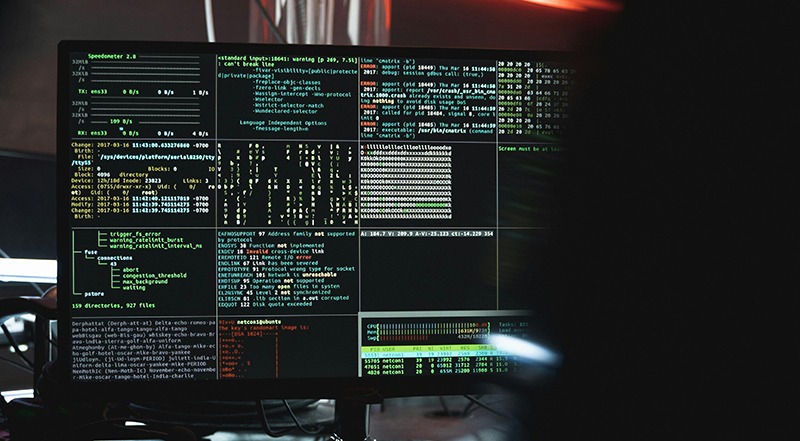Mainframes handle around 68% of the entire production of the IT workloads of the world. They are the backbone of modern business, any interruptions could devastate companies and customers, cost millions of dollars, and damage reputations.
Given the significance of their role in global economics, security is—and should be—a top priority. Yet an estimated 95% of security breaches are caused by human error. And it takes around 200 days to even detect a mainframe breach. As noted through the surveys, around 63% mentioned that meeting security and compliance needs is the main priority.
As you start planning application migrations, first look in-house. As ISACA Board member Jason Lau said, “Cybersecurity isn’t just about technology; it’s about the people behind it.”
Mainframe Security Practices for application migrations
Companies arrive at the business decision to migrate mainframe applications to the Cloud for different reasons, including improving networking, controlling budgets, and expanding storage to the Cloud.
We’ve learned from successfully migrating mainframe applications to the Cloud and produced a list of best practices for mainframe security during the process.
1. Know and Document the Current System
Analysts have to know the current system before developing a successful migration plan. For the initial task, teams must document every input, output, priority, trigger, timing, and various systems applying to the supply or relying on this application. Determining whether the migration will render any features obsolete is also essential. Teams can drop that code which reduces bloat in a production cloud environment.
The main areas to document include:
- Finding the logical mode for grouping and emphasizing the applications in the system. Write it, draw it, use a whiteboard or flowchart software if needed, but it is imperative to know what is where, how it’s connected, and if it will move to the Cloud.
- Deciding what to prioritize for testing and what to migrate in stages. This reduces risk and simplifies the process.
- Noting every internal and external integration point with the rest of the systems. It is the key step to avoiding surprises. It enables the analysts to inspect the data flow for redundancies. No one wants to switch systems and then learn none of the partner APIs work.
Knowing the system means examining more than code and its connections. The top mainframe security threats to review from a human-error perspective include lax attention to privileges, passwords, permissions, and faceless accounts.
2. Establish a Migration Plan
The migration plan renders a roadmap for the planned duration of the project. Additionally, the document offers the most valuable tool for communicating. It is where every stakeholder can review and find the issues before they take place across the production. Highly detailed plans prove effective for the users.
The main components of a migration plan include:
- Performance requirements: Documentation of the performance requirements of the new systems. A few examples of performance requirements include the storage capacity, speed of execution, and the response time.
- Migrated system architecture: Providing technical details to help with the processing, storage, and interfaces with Two Factor Authentication. The report would include hardware, software, network connections, vendor accounts, and more.
- Work plan: Documenting every required code, interface changes, and scheduling for the developers and hardware technicians that must occur right before and after the migration.
- Test plan: Documenting the test cases and the results expected. Including the details about the functional needs of outputs, scheduling, interfaces, and reports within the test plan.
- Training plan: Offering a robust training plan covering the new or updated processes to aid the system operators, support, and users.
- Security plan: Ensuring software, monitoring, and governance over the policies, assuring the company that the new system is functioning effectively without any overlooked gaps.

3. Develop a Proof of Concept
The key step in implementing the mainframe migration best practices is developing a proof-of-concept. The proof-of-concept demonstrates the feasible plans. Additionally, this could remove the flaws within the strategy for addressing them before any real work. Additionally, the study of this feasibility aids in selling the project to the management and the other stakeholders.
The team of developers can create a robust test environment mirroring the production ecosystem. Using this test plan can help the team document the results and performances, proving the effective validity of the migration plans. The other components of the proof-of-concept include the past migrations that functioned as wanted with identical architecture, and clear outlines for how security will be addressed and maintained.
4. Get Buy-Ins from Every Stakeholder
Returning to the importance of people, none of the plans will come to fruition without stakeholder approval—specifically the system users and managers in charge of the budgeting. A few individuals may express their resistance due to concerns with functionality, security, and performance. Others may only cooperate if they want to avoid changes or worry about their job future.
By implementing the best practices of mainframe application migrations to the Cloud, everyone can be informed of the plan and next steps and feel more invested. The well-laid-out plans include a clear statement regarding the benefits that help to remove several of the concerns. Benefits to mention include:
- Help stakeholders understand how modernization can assist businesses in saving money and growing. For example, improved scalability would aid the companies in scaling up at responding to the new scopes or scaling back whenever businesses slow down.
- Emphase how the changes could boost jobs and careers. For example, they would avail a better interface, remote accesses, and scopes for developing new skills.
- Consider hiring a consulting firm with expertise in mainframe migration and Cloud computing. An outsider perspective from a well-respected team could smooth the process while enabling teams to learn new things, enhance data quality, and finish tasks efficiently.
In Summary
Mainframe security is a major undertaking for every business. The aforementioned points help you initiate the continuous process of securing your mainframe applications in the Cloud—and on your mainframe.








0 Comments